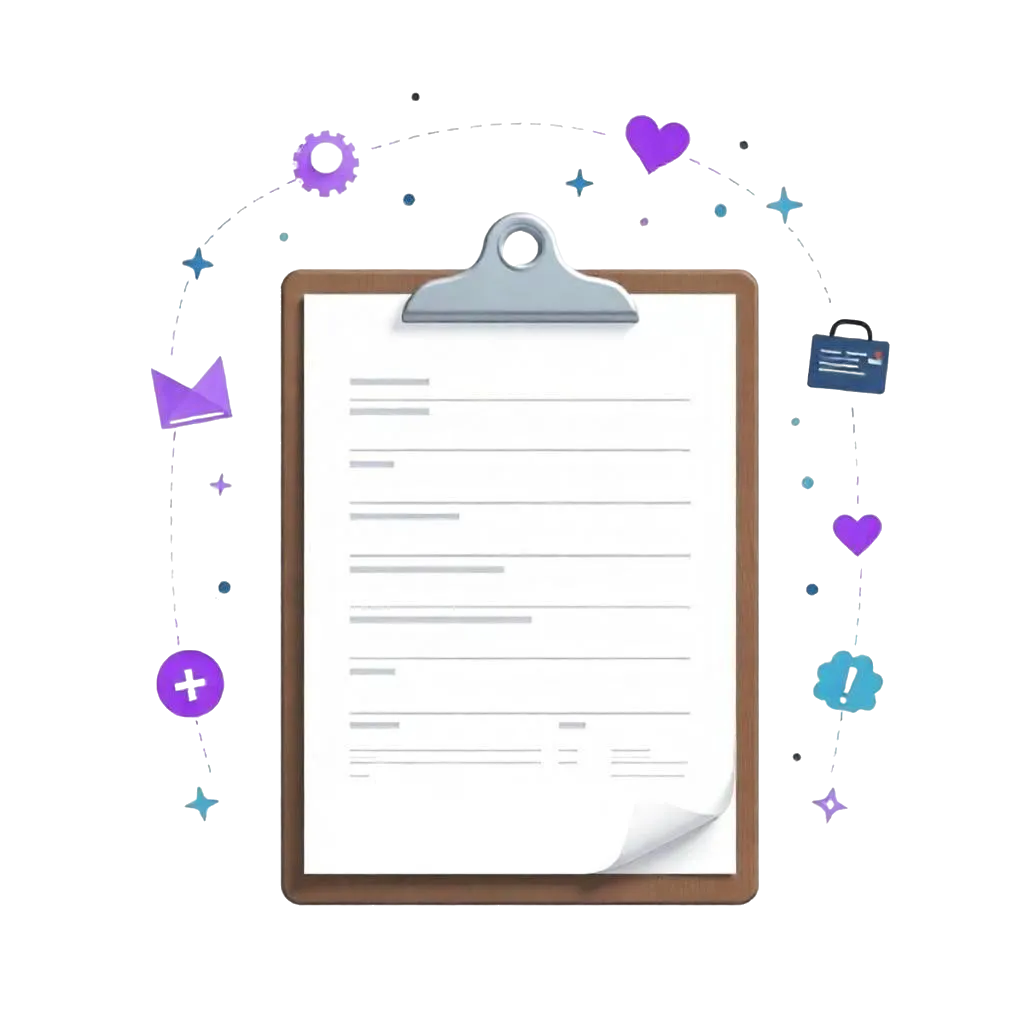Summary: Prior authorization for medications typically takes 24-72 hours for standard requests, 7-14 business days for complex cases, and 10-30+ days for specialty medications. Urgent requests can be processed within 24-72 hours. To streamline the process, consider utilizing electronic prior authorization systems like SPRY, which significantly reduce processing times and improve efficiency.
Executive Summary: What You Need to Know Right Now
Prior authorization for medications typically takes 24-72 hours for standard requests, but can extend to 30+ days for complex cases. With healthcare providers now completing an average of 39 prior authorizations per week and spending 13 hours weekly on these requests, understanding exact timelines and acceleration strategies is crucial for both patients and providers.
Key Takeaways:
- Standard approvals: 1-3 business days
- Complex cases: 7-14 business days
- Specialty medications: 10-30+ days
- Urgent/expedited requests: 24-72 hours
- Electronic prior authorization: Average response time of 3 minutes 54 seconds
- Appeal success rate: Over 83% of appeals are successful
Prior Authorization Timeline: Exact Processing Times by Category
Standard Medication Approvals: 24-72 Hours
Most routine prior authorization requests receive responses within 1-3 business days. This category includes:
- Generic medications with established safety profiles
- Common chronic disease medications (diabetes, hypertension)
- Routine preventive medications
- Well-documented treatment protocols
Factors that keep requests in the standard timeline:
- Complete documentation submitted upfront
- Clear medical necessity
- Formulary-preferred medications
- Electronic submission through integrated systems
Complex Cases: 7-14 Business Days
More complicated requests requiring additional review typically take 1-2 weeks:
- Medications requiring detailed clinical justification
- Off-label drug uses
- Combinations requiring safety review
- Cases needing peer-to-peer consultation
What makes a case "complex":
- Multiple comorbidities
- Previous treatment failures require documentation
- High-risk patient populations
- Novel or experimental treatments
High-Cost and Specialty Medications: 10-30+ Days
The most expensive and specialized treatments face the longest review periods:
- Specialty drugs: $10,000+ annually (oncology, immunology, rare diseases)
- Biologics: Require extensive safety documentation
- Orphan drugs: Limited safety data requiring thorough review
- Experimental treatments: May need medical director approval
Expedited/Urgent Requests: 24-72 Hours
For life-threatening or urgent medical situations, insurers offer expedited processing:
- Emergency medications: Same-day to 24 hours
- Urgent clinical needs: 24-72 hours maximum
- Hospital discharge medications: Priority processing
- Cancer treatments: Fast-track protocols available
Requirements for expedited processing:
- Documentation of urgent medical necessity
- Provider attestation of immediate need
- Risk assessment if treatment is delayed
- Clinical justification for timing
Timeline Breakdown by Insurance Type
8 Proven Strategies to Accelerate Prior Authorization Approval
1. Leverage Electronic Prior Authorization (ePA) Systems
Impact: Reduces processing time by up to 69%
Electronic systems deliver dramatic improvements:
- Average response time: 3 minutes 54 seconds vs. days for manual processing
- 62% of ePA requests receive determination within 2 hours
- 43% receive immediate determination
- 84% of prescribers now use EHR systems with ePA capability
Implementation benefits:
- Real-time formulary checking
- Automated data population
- Immediate submission validation
- Direct integration with provider workflows
2. Submit Complete Documentation Upfront
Most common denial reason: Incomplete or incorrect documentation
Essential documentation checklist:
- Patient demographics: Insurance ID, contact information
- Clinical justification: Detailed medical necessity explanation
- Treatment history: Previous medications tried and failed
- Diagnostic codes: Accurate ICD-10 codes
- Lab results: Recent relevant test results
- Provider credentials: NPI numbers and practice information
Pro tip: Create standardized templates for common conditions to ensure consistency and completeness.
3. Utilize Real-Time Prescription Benefit (RTPB) Tools
Benefits: Know PA requirements before prescribing
RTPB technology provides:
- Immediate formulary checking at the point of prescribing
- Alternative medication suggestions that don't require PA
- Patient cost information for different options
- PA requirement alerts before submission
Result: Proactive decision-making reduces delays and improves patient experience.
4. Establish Pharmacy-Led PA Teams
Time savings: Reduces physician involvement by up to 70%
Dedicated PA teams offer:
- Specialized expertise in insurer requirements
- Streamlined communication with all stakeholders
- Faster turnaround times through focused attention
- Higher success rates due to experience
Best practices:
- Train staff on insurer-specific requirements
- Implement workflow management systems
- Establish direct insurer contacts
- Track performance metrics
5. Master the Expedited Request Process
When to use expedited processing:
- Life-threatening conditions
- Severe symptom exacerbation
- Hospital discharge situations
- Treatment interruption risks
Requirements for success:
- Clear documentation of urgency
- Clinical justification for timing
- Provider attestation of medical necessity
- Follow-up within 24-48 hours
6. Implement Proactive Renewal Management
Challenge: 25% of PA approvals expire before renewal
Solution strategies:
- Calendar tracking systems for expiration dates
- Automated renewal alerts 30-60 days before expiration
- Standing renewal protocols for chronic conditions
- Patient communication systems about renewal timing
7. Optimize Payer-Specific Workflows
Key insight: Each insurer has unique requirements and processes
Customization strategies:
- Payer-specific forms and documentation requirements
- Preferred communication channels (portal vs. fax vs. phone)
- Timeline expectations based on historical data
- Contact information for expedited processing
8. Leverage Appeals Strategically
Success rate: Over 83% of appeals result in approval
When to appeal:
- Clinical evidence supports the necessity
- Denial based on incorrect information
- Policy interpretation disputes
- New clinical data available
Appeal optimization:
- Submit within required timeframes
- Include additional clinical documentation
- Request peer-to-peer review when available
- Consider external review for complex cases
Navigating Denials and Appeals: Your Action Plan
Understanding Denial Reasons
Most common denial categories:
- Lack of medical necessity (45% of denials)
- Incomplete documentation (32% of denials)
- Formulary restrictions (28% of denials)
- Step therapy requirements (25% of denials)
- Experimental/investigational (15% of denials)
The Appeals Process: Step-by-Step
Internal Appeal (Level 1)
Timeline: 15-30 days for standard appeals, 72 hours for urgent cases.
Success rate: 83% of Medicare Advantage appeals are successful.
Steps:
- Review the denial letter thoroughly for specific reasons
- Gather additional documentation addressing denial reasons
- Submit a formal appeal within the required timeframe
- Include peer-reviewed literature supporting medical necessity
- Request peer-to-peer review if available
External Review (Level 2)
When to pursue: Internal appeal denied despite strong clinical evidence.
Timeline: 60 days for standard, 72 hours for urgent.
Success rate: Varies by state and condition.
Requirements:
- Internal appeal completed
- Medical necessity dispute
- Non-experimental treatment
- State or federal jurisdiction
Appeal Success Strategies
Documentation best practices:
- Comprehensive medical records showing treatment history
- Clinical literature supporting the requested treatment
- Physician letters detailing medical necessity
- Patient impact statements describing consequences of delay
- Alternative treatment failures with specific outcomes
Timing considerations:
- Submit immediately after receipt
- Track all deadlines carefully
- Follow up regularly on appeal status
- Escalate when appropriate to medical directors
Industry Trends and Future Outlook
Regulatory Changes
Recent developments:
- Medicare Part D ePA requirements (effective January 1, 2022)
- CMS interoperability rules promoting electronic processing
- SUPPORT Act provisions for addiction treatment
- State-level initiatives streamlining PA processes
Future regulations:
- Expanded EPA mandates for all government programs
- Standardized data exchange requirements
- Transparency reporting mandates
- Gold card programs for high-performing providers
Technology Innovations
Emerging solutions:
- Artificial intelligence for automated decision-making
- Machine learning for denial prediction and prevention
- Blockchain technology for secure data sharing
- Mobile applications for real-time status updates
Integration advances:
- FHIR standards for improved interoperability
- Cloud-based platforms for scalable processing
- API development for seamless EHR integration
- Real-time benefit verification at the point of care
Payer Initiatives
Industry changes:
- UnitedHealthcare eliminated PA for 20% of procedures
- Cigna removed 25% of services from PA requirements
- Gold card programs for reliable providers
- Same-day approvals for routine requests
Conclusion
Prior authorization timelines vary significantly depending on the medication's complexity, the type of insurance, and the submission method. While standard approvals typically take 24-72 hours, complex cases can extend to 30+ days. The key to minimizing delays lies in understanding the process, leveraging electronic systems, and implementing proven acceleration strategies.
Key takeaways for patients:
- Ask your provider about PA requirements before leaving the appointment
- Understand your insurance plan's specific timelines and requirements
- Know your appeal rights and don't hesitate to use them
- Consider alternatives while waiting for approval
Key takeaways for healthcare providers:
- Invest in electronic prior authorization systems for 69% faster processing
- Train staff on payer-specific requirements and best practices
- Implement proactive renewal management systems
- Track performance metrics to identify improvement opportunities
With proper planning, documentation, and system optimization, most prior authorization delays can be minimized, ensuring patients receive timely access to necessary medications while reducing administrative burden on healthcare providers.
Physical Therapists can speed up approvals, reduce administrative load, and automate prior authorization workflows using platforms such as SPRY. SPRY guarantees quicker, more effective PA processing by integrating seamlessly with EHR systems, reducing delays that affect patient care.
Request a free trial today and experience faster, hassle-free prior authorization with SPRY!
Frequently Asked Questions
How long does prior authorization take for urgent medications?
Urgent or expedited prior authorization requests typically receive responses within 24-72 hours. Emergency medications may be approved same-day if proper documentation of medical urgency is provided. Healthcare providers must document the urgent medical necessity and potential risks of treatment delay.
What's the difference between electronic and manual prior authorization processing times?
Electronic prior authorization (ePA) averages 3 minutes 54 seconds for responses, with 62% of requests receiving determination within 2 hours. Manual processing typically takes 2-5 business days and involves phone calls, faxes, and paperwork that can introduce delays and errors.
Why do some prior authorizations take 30+ days?
Extended processing times typically occur for:
- Specialty medications requiring extensive clinical review
- Experimental treatments need medical director approval
- Complex cases with multiple comorbidities
- Incomplete documentation requiring additional information
- Payer backlogs during high-volume periods
What happens if my prior authorization is denied?
You have the right to appeal denial decisions. 83% of appeals are successful in Medicare Advantage plans. The appeals process typically involves:
- Internal appeal (15-30 days)
- External review if internal appeal fails
- Additional documentation addressing denial reasons
- Peer-to-peer review opportunities
Can I get my medication while waiting for prior authorization approval?
Options while waiting include:
- Temporary supplies (bridge prescriptions)
- Alternative medications not requiring PA
- Patient assistance programs from manufacturers
- Cash payment with reimbursement after approval
- Emergency supplies from pharmacies (usually 3-7 days)
How can healthcare providers reduce prior authorization processing times?
Most effective strategies include:
- Electronic submission systems (69% faster processing)
- Complete documentation upfront to avoid delays
- Real-time benefit checking before prescribing
- Dedicated PA staff for specialized handling
- Proactive renewal management to prevent lapses
Reduce costs and improve your reimbursement rate with a modern, all-in-one clinic management software.
Get a DemoLegal Disclosure:- Comparative information presented reflects our records as of Nov 2025. Product features, pricing, and availability for both our products and competitors' offerings may change over time. Statements about competitors are based on publicly available information, market research, and customer feedback; supporting documentation and sources are available upon request. Performance metrics and customer outcomes represent reported experiences that may vary based on facility configuration, existing workflows, staff adoption, and payer mix. We recommend conducting your own due diligence and verifying current features, pricing, and capabilities directly with each vendor when making software evaluation decisions. This content is for informational purposes only and does not constitute legal, financial, or business advice.










